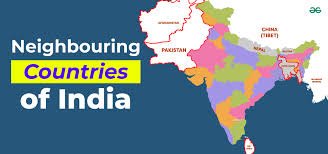The Smallest Neighboring Country in the World: An Insight into Monaco
Monaco, a tiny city-state located on the French Riviera, holds the title of the smallest neighboring country in the world. Despite its small size, Monaco is globally recognized for its luxury, wealth, and as a hub for international events like the Monaco Grand Prix and the Monte Carlo Casino. Monaco is bordered by France and the Mediterranean Sea, offering a unique geographical and political status. This article delves into the fascinating facts and significance of Monaco, shedding light on why it stands as the smallest neighboring country in the world.
Monaco’s Geographical Size and Borders
Monaco, with an area of just 2.02 square kilometers, is often described as a microstate. It shares its border with France and has a small coastline along the Mediterranean. Despite its limited area, Monaco boasts a highly urbanized environment with world-renowned architecture and is home to many wealthy individuals. The country’s location on the Mediterranean coast makes it a prime destination for tourists and an attractive place for international business.
Political Structure and Governance
Monaco is a constitutional monarchy with Prince Albert II as its current ruler. The political system is a unique blend of monarchy and democratic institutions. Although the Prince holds significant executive powers, the country has a National Council, which serves as the legislative body. Monaco’s government focuses on maintaining its status as a financial and tourism hub while ensuring political stability.
Monaco’s Economy and Global Impact
Monaco’s economy is heavily reliant on tourism, banking, and real estate. The country has long been known for its favorable tax policies, attracting international investors and entrepreneurs. Monaco is also a global leader in luxury industries, with numerous prestigious brands operating within its borders. Despite its small size, Monaco plays a significant role in the global economy, particularly in the finance and tourism sectors.
Why This News is Important:
Global Recognition of Monaco
Monaco’s status as the smallest neighboring country in the world is not just a matter of geographical curiosity but also carries significant global importance. The microstate is a symbol of luxury and exclusivity, attracting the world’s elite and influencing global tourism and business. Understanding Monaco’s political, economic, and social dynamics can help students grasp how even the smallest countries can wield substantial influence on the world stage.
Relevance to Geography and International Relations
For students preparing for government exams, Monaco’s geopolitical positioning is significant. Its location as the smallest neighboring country in the world provides insight into how geography can shape a country’s economic opportunities and international relationships. Moreover, Monaco’s relationship with France and other global players highlights the importance of diplomatic ties in maintaining political and economic stability.
Historical Context: The Rise of Monaco as a Global Entity
Monaco has a rich history, dating back to the establishment of the Grimaldi family’s rule in 1297. Over centuries, Monaco has transformed from a small fortress to a global financial and tourism hub. The country’s independence was secured in 1641 when it became a protectorate of France. In the 19th century, Monaco’s economic prosperity increased dramatically due to the establishment of the Monte Carlo Casino. This casino, coupled with favorable tax policies, attracted wealthy individuals and business magnates to the region.
Monaco’s international status further grew in the 20th century under the reign of Prince Rainier III, who modernized the country’s infrastructure and international relations. Today, Monaco continues to thrive as a key player in the global economy, despite its small size.
Key Takeaways from “Monaco: The Smallest Neighboring Country in the World”
| Serial No. | Key Takeaway |
|---|---|
| 1 | Monaco is the smallest country in the world, with an area of 2.02 square kilometers. |
| 2 | It shares borders only with France and has a small coastline along the Mediterranean. |
| 3 | The political system is a constitutional monarchy, with Prince Albert II as the head of state. |
| 4 | Monaco’s economy is centered around tourism, banking, and real estate, with a focus on luxury industries. |
| 5 | Despite its small size, Monaco is an important global financial hub, attracting international investors. |
Important FAQs for Students from this News
What is the smallest neighboring country in the world?
- Monaco is the smallest neighboring country in the world, covering an area of just 2.02 square kilometers.
What countries border Monaco?
- Monaco shares its border with France and has a coastline along the Mediterranean Sea.
What is the political system of Monaco?
- Monaco is a constitutional monarchy, with Prince Albert II serving as the head of state. It also has a National Council that functions as the legislative body.
What is the primary economic activity in Monaco?
- Monaco’s economy is heavily reliant on tourism, banking, and real estate, with a significant focus on luxury industries.
How did Monaco become independent?
- Monaco became independent in 1641 after establishing itself as a protectorate of France. It has remained independent ever since.

